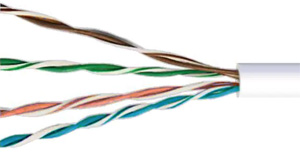How to remove noise from your measurements
24 November 2021
All measurements are contaminated by noise. It may be generated within the electrical components of the input amplifier: internal noise. It may also be added to the signal as it travels down the wires to the amplifier: external noise. Noise is more of a problem for millivolt signals, from sensors like thermocouples, than it is for larger, volt-level, signals.
How do you minimise the effect of noise on your signal?
Reducing Noise Generated by the Amplifier
Internal noise arises from thermal effects in the amplifier and although it can be minimised it cannot be removed completely. (The amplifier in data acquisition equipment increases the voltage signal to a level suitable for the analogue-to-digital converter.)
Typically amplifiers will generate a few microvolts of internal noise which limits the resolution of the signal to this level. The amount of noise added to the signal depends on the bandwidth of the input amplifier, from the lowest frequency allowed into the amplifier to the highest. Amplifiers with a bandwidth matching that of the input signal will be less noisy than, say, feeding a 100 Hz signal into an amplifier that covers 0 to 10 MHz.
Integrating A-D converters reduce noise by integrating the signal over a period, which is effectively reducing the bandwidth.
Reducing Environmental Noise
External noise reduction is much more of an art form. Noise is added because the signal leads act as aerials picking up environmental electrical activity. Much of this is common to both signal wires, and a differential amplifier will remove a lot of this common mode voltage.
Differences between the signal wires (for example if they are separated rather than twisted together) will lead to residual voltages being added to the signal, increasing noise. Keeping the signal wires as short as possible, twisted together and as far away from electrical machinery as possible, will help. You can also shield your signal wires.

Filtering Noise
Filtering can reduces noise errors in the signal. For most applications a low-pass filter is used. This allows through the lower frequency components but attenuates the higher frequencies. The cut-off frequency must be compatible with the frequencies present in the actual signal - as opposed to possible contamination by noise - and the sampling rate used for the A-D conversion.

A low-pass filter that's used to prevent higher frequencies, in either the signal or noise, from introducing distortion into the digitised signal is known as an anti-aliasing filter. These generally have a sharper cut-off than the normal low-pass filter used to condition a signal. Anti-aliasing filters are specified according to the sampling rate of the system and there must be one filter per input signal.
Seven Ways to Reduce Noise
- Keep the signal wires short
- Keep the wires away from electrical machinery
- Use twisted pair wires
- Use differential inputs to remove noise common the both wires
- Use an integrating A-D converter to reduce mains frequency interference
- Filter the signal
- Consider shielding the wires
Further Reading
Filtering: How to Remove Interference from your Signal
https://www.windmill.co.uk/filter.html
Fixing Fluctuating Measurements
https://www.windmill.co.uk/fixing-fluctuating-measurements.html
Using Differential or Single-Ended Inputs to connect your Signals?
https://www.windmill.co.uk/differential.html
Comments
"Excellent informative information.
You could also mention another way for reduction of environmental noise
pickup during transmission from the sensor to the instrument.
An industry standard 4-20ma signal is preferable to reduce noise because
creating a current over a low impedance is far more difficult than inducing
a voltage across a high impedance"
Bob Clarke